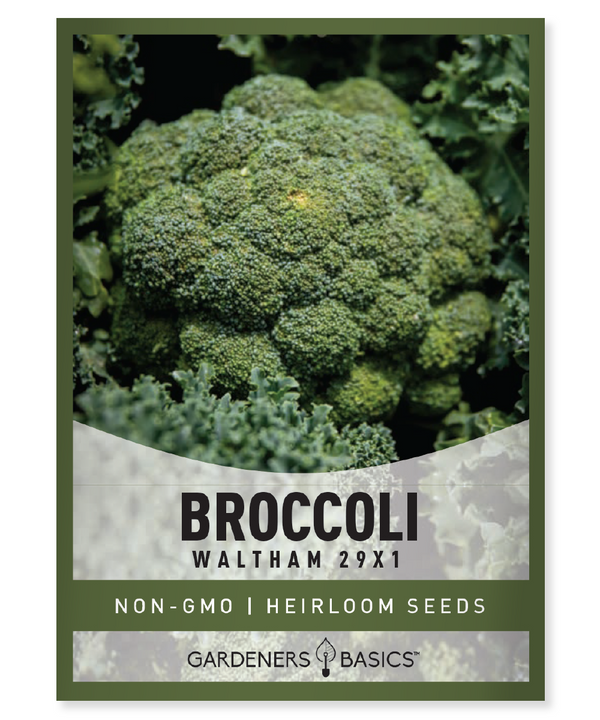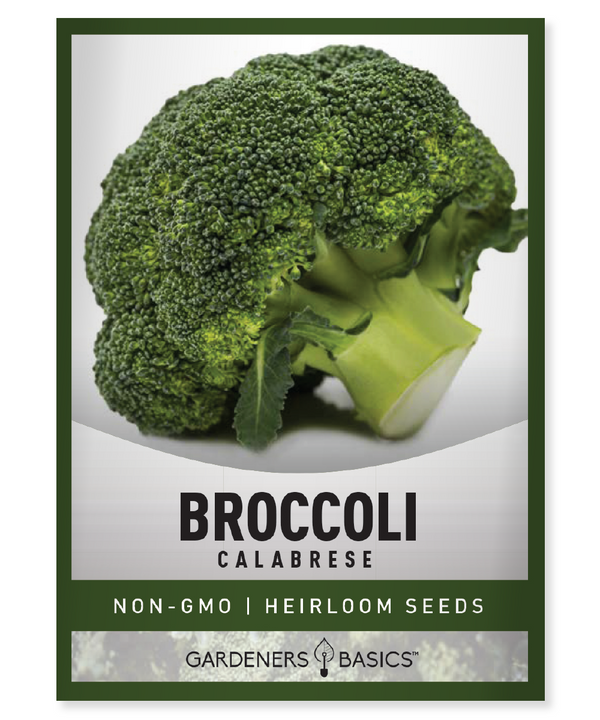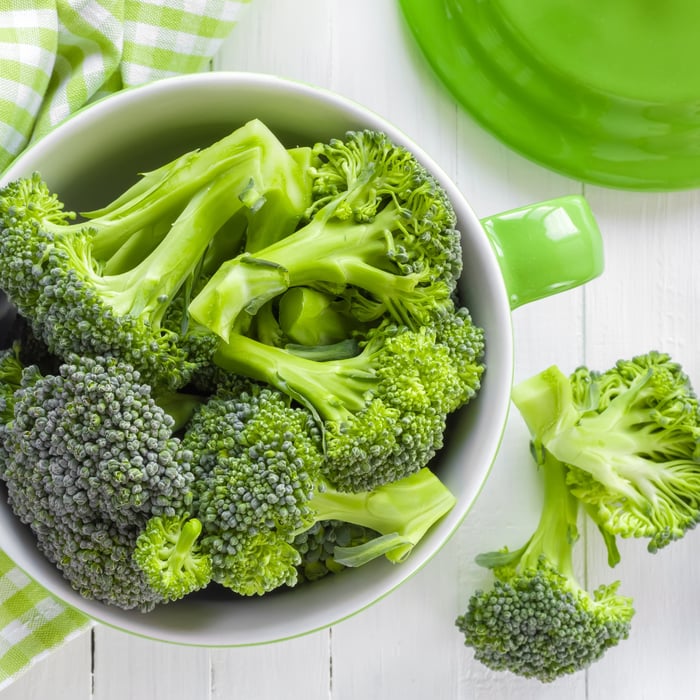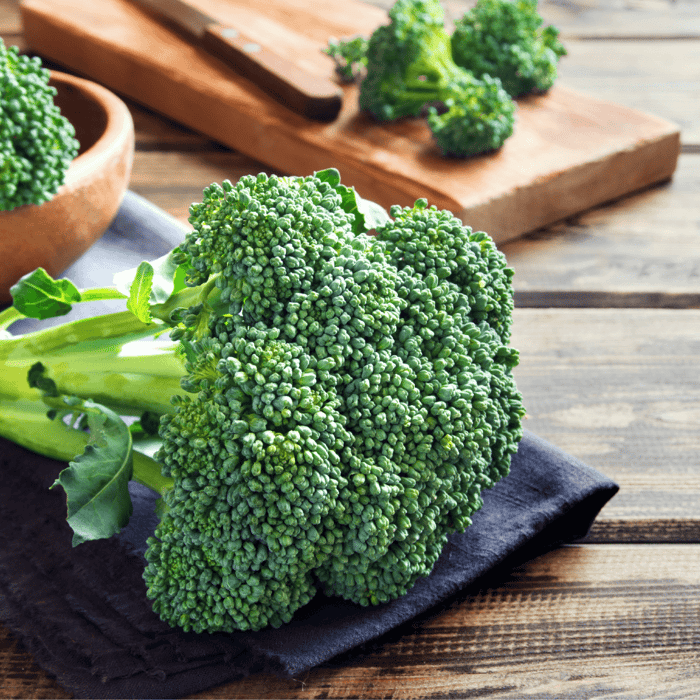Knowing how to grow broccoli in Georgia can be a rewarding experience if you follow the right steps. Broccoli is a cool-season crop that grows best in full sun, and it's important to know the right time to plant your broccoli to get the best results. In this article, we'll discuss everything you need to know to grow broccoli in Georgia, including how to prepare your soil, when to plant your seeds, and how to care for your broccoli plants throughout the growing season.
Waltham 29 Broccoli Seeds

$2.49
Waltham Broccoli Seeds – Heirloom, Non-GMO, Non-Hybrid, Open-Pollinated Grow the perfect garden with our premium Waltham 29x1 Broccoli seeds, a versatile, cold-tolerant heirloom variety that produces large, flavorful heads with tender side shoots for extended harvests. These seeds are non-GMO,… read more
Soil Test
Before planting any vegetable, it's important to test the soil to make sure it has the right pH balance and nutrients for the crop you're growing. Broccoli prefers a slightly acidic soil with a pH range of 6.0 to 7.0. If your soil's pH is outside of this range, you can amend it with lime to raise the pH or sulfur to lower it. A soil test will also give you information about the soil's nutrient levels, which can help you decide what amendments, if any, to add to your soil before planting.
Fall Crop
In Georgia, broccoli is typically grown as a fall crop, which means planting it in late summer or early fall. Planting in the fall allows the broccoli to mature in the cooler months, which is ideal for this cool-weather crop. The exact timing of planting will depend on your location in Georgia, but generally, broccoli should be planted 85-100 days before the first frost. For most of Georgia, this means planting in August or early September.
Plant Your Broccoli
Once you have your soil prepared and your planting date scheduled, it's time to plant your broccoli. There are two main ways to plant broccoli seeds: you can either start them indoors and then transplant them outside, or you can sow them directly into the garden.
If you decide to start your seeds indoors, you'll need to start them 6-8 weeks before your planned planting date. Use a high-quality seed starting mix and keep the soil moist until the seeds germinate. Once the seedlings are 3-4 inches tall, you can transplant them into the garden, spacing them about 18 inches apart.
If you prefer to sow your seed directly in the garden, plant the seeds 1/2 inch deep and 3 inches apart. Once the seedlings emerge, thin them to 18 inches apart.
Broccoli is a cool season crop that prefers full sun, which means at least six hours of direct sunlight per day. It's also important to keep the soil moist, providing about one inch of water per week. Mulching around the plants can help retain moisture and suppress weeds.
Growing Season
Broccoli is a fast-growing crop, with a typical growing season of 60-100 days. During this time, it's important to keep an eye on the plants and make sure they're getting enough water and nutrients. Broccoli is a heavy feeder, so you may need to fertilize with a balanced fertilizer once or twice during the growing season.
Broccoli heads will form at the top of the plant, and they should be ready to harvest when they are firm and tightly closed. The main head should be cut off when it reaches 4-7 inches in diameter, depending on the variety. After the main head is harvested, the plant will continue to produce side shoots, also known as secondary heads. These can be harvested as they mature, extending the harvest season.
Calabrese Broccoli Seeds

$2.49
Calabrese Broccoli Seeds – Heirloom, Non-GMO, Non-Hybrid, Open-Pollinated Grow your own delicious and nutrient-packed Calabrese Broccoli with our premium heirloom seeds! Known for its tender florets and exceptional flavor, Calabrese Broccoli is a classic Italian variety perfect for home… read more
Harvest Broccoli
Harvesting broccoli can be a bit tricky, as the heads need to be harvested at just the right time to ensure they're tender and flavorful. If you wait too long to harvest, the heads will become overripe and start to flower. If you harvest too early, the heads will be small and undeveloped.
To harvest broccoli, look for heads that are firm and tightly closed. The main head should be cut off with a sharp knife when it reaches the desired size, leaving at least 6 inches of stem attached to the plant. This stem will continue to produce side shoots or secondary heads that can be harvested later.
When harvesting the secondary heads, be sure to cut them off carefully with a sharp knife or garden shears, leaving some stem attached to the plant. Avoid tearing or breaking the stems, as this can damage the plant and reduce future yields.
Vegetable Seed Vault Kit | 35 Variety Pack

$29.95
$49.95
Ultimate Survival Seed Vault: 16,000+ Non-GMO Heirloom Vegetable Seeds for Emergency Preparedness Introducing the Seed Vault Kit, your all-in-one solution for emergency preparedness and sustainable gardening. This premium seed kit contains over 16,000 non-GMO, Heirloom, Non-Hybrid, and Open Pollinated seeds,… read more
Conclusion
Growing broccoli in Georgia can be a fun and rewarding experience, especially if you follow the right steps. Remember to test your soil, plant your seeds at the right time, and provide your plants with plenty of water, nutrients, and sunlight. By following these tips, you'll be able to grow delicious and nutritious broccoli that will provide you with a bountiful harvest for months to come.
Whether you start your broccoli seeds indoors or sow them directly in the garden, make sure to give your plants enough space to grow and thrive. And don't forget to harvest your broccoli at just the right time to ensure that it's tender and flavorful. With a little bit of care and attention, you can enjoy the delicious taste and health benefits of fresh broccoli right from your own garden. Knowing how to grow broccoli in Georgia will set you up with lots of success!
FAQs
Q: When should I plant broccoli in Georgia?
A: Broccoli is typically grown as a fall crop in Georgia, and should be planted 85-100 days before the first frost. For most of Georgia, this means planting in August or early September.
Q: Should I start broccoli seeds indoors or sow them directly in the garden?
A: You can do either, but starting seeds indoors can give you a head start on the growing season. If you start seeds indoors, make sure to transplant them into the garden once they're 3-4 inches tall.
Q: How much water does broccoli need?
A: Broccoli needs about one inch of water per week. If it's not getting enough water, the heads can become bitter and tough.
Q: What is the ideal pH range for broccoli soil?
A: Broccoli prefers a slightly acidic soil with a pH range of 6.0 to 7.0.
Q: Can I grow broccoli in containers?
A: Yes, broccoli can be grown in containers as long as the container is at least 12 inches deep and wide. Make sure to keep the soil moist and provide plenty of sunlight.
Q: What pests should I watch out for when growing broccoli?
A: Broccoli can be susceptible to pests like aphids, cabbage loopers, and flea beetles. You can use insecticidal soap or neem oil to control these pests.
Q: How do I know when my broccoli is ready to harvest?
A: Broccoli heads should be firm and tightly closed when they're ready to harvest. The main head should be cut off when it reaches 4-7 inches in diameter, depending on the variety.
Q: Can I harvest broccoli more than once?
A: Yes, after the main head is harvested, the plant will continue to produce side shoots, also known as secondary heads. These can be harvested as they mature, extending the harvest season.
Q: Can I plant broccoli in the spring in Georgia?
A: Broccoli can be grown in the spring in Georgia, but it's important to plant it early enough to avoid the hot summer months. Spring-planted broccoli should be harvested before temperatures reach the mid-80s Fahrenheit.







